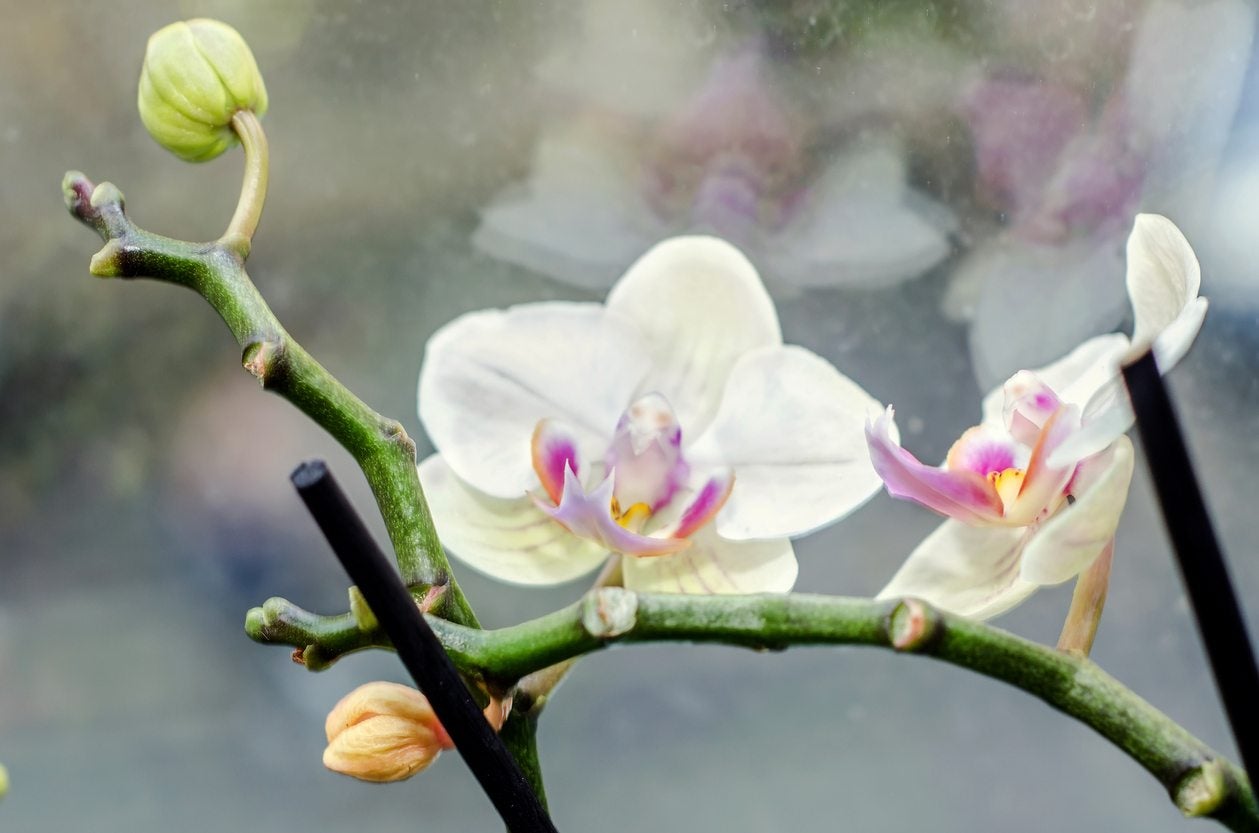Phal Orchid Care After Flowering – Caring For Phalaenopsis Orchids Post Bloom


One of the easiest and most elegant orchids to grow is Phalaenopsis. The plant's blooms last for weeks, providing lasting beauty in the home. Once blooms are finished, Phal orchid maintenance focuses on plant health. Good Phal orchid care after blooming sets the plant up for future blooms and the development of new foliage. Orchid care after flowering is similar to when plants are in flower. A few tricks might even get the old flower spike reblooming for a second flush of spectacular flowers.
Caring for Phalaenopsis Orchids Post Bloom
Phalaenopsis orchid care bears a simpler set of instructions compared to many other orchids, which is probably why this plant is one of the more commonly grown. Most Phals can be forced to bloom from the old flower spike and then the stem can be removed. A few species will only bloom off old stems, which should not be cut off. The most common moth orchids are the type which require the old stem to be removed after a secondary bloom. Only try to rebloom plants that are vigorous and healthy. Phals can produce numerous blooms per stem. Once the final flower is fading, you can cut the stem back to a couple of inches (5 cm.) from the soil with a clean, sharp knife. This not only improves the appearance of the plant but prevents it from wasting energy keeping a non-producing stem alive. Alternatively, you can try to get the old stem to flower anew. Cut the stem back to a healthy node. This is the first node below the lowest bloom on the spike. You can recognize the nodes by the triangular scar shape on the stem. Rebloom will only occur on green flower spikes. If the spike has become yellow to brown, remove it to 2 inches (5 cm.) from the soil and continue normal Phalaenopsis orchid care.
Tricking Your Phal into Reblooming
Orchids require very specific conditions to bloom, most of which are not found in the home interior. If you want to try to force the plant to bloom, move it to an area where temperatures are 55 degrees Fahrenheit (13 C.) but the plant receives bright, indirect sunlight during the day. Once you see a flower spike forming, return the plant to its warmer location. Flower spikes will have pointed tips as opposed to new leafing shoots, which are slightly rounded. Young flowering spikes will benefit from feeding every other week with a houseplant fertilizer diluted by half. Fertilizing bi-weekly is not a necessary part of orchid care after flowering. You can expect flowers in 8 to 12 weeks if forcing is successful.
Phal Orchid Maintenance
Phal orchid care after blooming is mostly reduced to correct watering procedures and providing adequate light and temperatures. Once blooming is finished and the spike has been removed, the plant will focus on growing new foliage and roots. Water the plant once per week with 3 ice cubes. This gives the adequate amount of water the plant needs, delivered at a slower rate so the roots can uptake the moisture. Keep the plant in a north or easterly facing window. This resting period where the plant is not producing flowers is also the best time to repot. Choose a good orchid mixture for a happier Phalaenopsis. At repotting, check for any diseased roots and excise these out with a sterile razor blade. That is pretty much it when caring for Phalaenopsis orchids post-bloom. The resting period and superior care will help ensure the next season's lovely flowers.
Gardening tips, videos, info and more delivered right to your inbox!
Sign up for the Gardening Know How newsletter today and receive a free copy of our e-book "How to Grow Delicious Tomatoes".

Bonnie Grant is a professional landscaper with a Certification in Urban Gardening. She has been gardening and writing for 15 years. A former professional chef, she has a passion for edible landscaping.
-
 Looking For Plants To Give You The Soft And Fuzzies? Try These 5 Fuzzy Leaf Plant Options
Looking For Plants To Give You The Soft And Fuzzies? Try These 5 Fuzzy Leaf Plant OptionsLovers of texture, drama, silver foliage and tactile plants will adore these special sensory garden additions. These fuzzy leaf plant options will leave you all aglow
By Susan Albert
-
 Get Ready For A Summer Of Hummers! Grow These Full Sun Hummingbird Plants and Flowers
Get Ready For A Summer Of Hummers! Grow These Full Sun Hummingbird Plants and FlowersIf you’re lucky enough to enjoy a sunny backyard, make sure you are maxing out on your pollinator opportunities and grow these full sun hummingbird plants and flowers
By Tonya Barnett